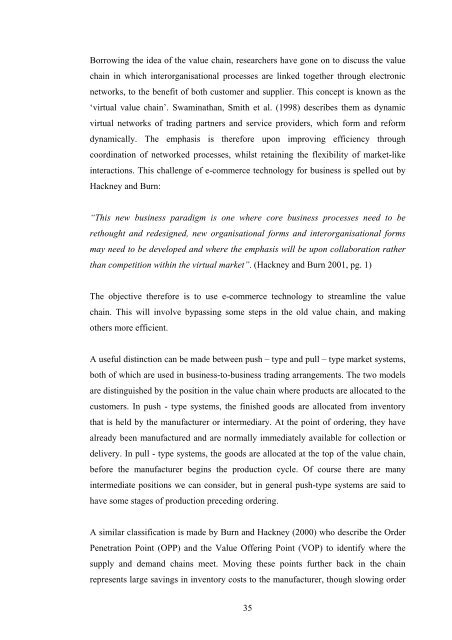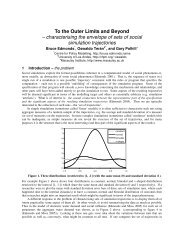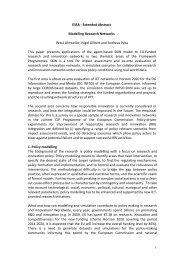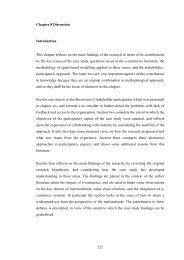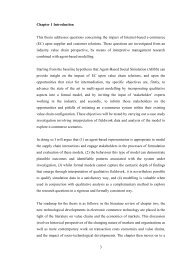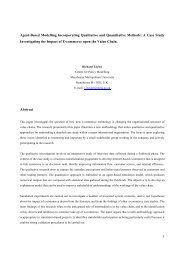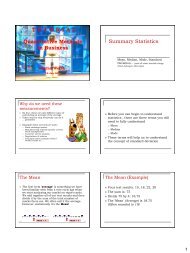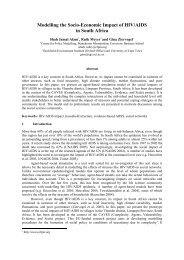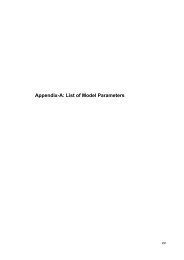7 Chapter 2 Literature Review: Markets, Intermediation and E ...
7 Chapter 2 Literature Review: Markets, Intermediation and E ...
7 Chapter 2 Literature Review: Markets, Intermediation and E ...
You also want an ePaper? Increase the reach of your titles
YUMPU automatically turns print PDFs into web optimized ePapers that Google loves.
Borrowing the idea of the value chain, researchers have gone on to discuss the value<br />
chain in which interorganisational processes are linked together through electronic<br />
networks, to the benefit of both customer <strong>and</strong> supplier. This concept is known as the<br />
‘virtual value chain’. Swaminathan, Smith et al. (1998) describes them as dynamic<br />
virtual networks of trading partners <strong>and</strong> service providers, which form <strong>and</strong> reform<br />
dynamically. The emphasis is therefore upon improving efficiency through<br />
coordination of networked processes, whilst retaining the flexibility of market-like<br />
interactions. This challenge of e-commerce technology for business is spelled out by<br />
Hackney <strong>and</strong> Burn:<br />
“This new business paradigm is one where core business processes need to be<br />
rethought <strong>and</strong> redesigned, new organisational forms <strong>and</strong> interorganisational forms<br />
may need to be developed <strong>and</strong> where the emphasis will be upon collaboration rather<br />
than competition within the virtual market”. (Hackney <strong>and</strong> Burn 2001, pg. 1)<br />
The objective therefore is to use e-commerce technology to streamline the value<br />
chain. This will involve bypassing some steps in the old value chain, <strong>and</strong> making<br />
others more efficient.<br />
A useful distinction can be made between push – type <strong>and</strong> pull – type market systems,<br />
both of which are used in business-to-business trading arrangements. The two models<br />
are distinguished by the position in the value chain where products are allocated to the<br />
customers. In push - type systems, the finished goods are allocated from inventory<br />
that is held by the manufacturer or intermediary. At the point of ordering, they have<br />
already been manufactured <strong>and</strong> are normally immediately available for collection or<br />
delivery. In pull - type systems, the goods are allocated at the top of the value chain,<br />
before the manufacturer begins the production cycle. Of course there are many<br />
intermediate positions we can consider, but in general push-type systems are said to<br />
have some stages of production preceding ordering.<br />
A similar classification is made by Burn <strong>and</strong> Hackney (2000) who describe the Order<br />
Penetration Point (OPP) <strong>and</strong> the Value Offering Point (VOP) to identify where the<br />
supply <strong>and</strong> dem<strong>and</strong> chains meet. Moving these points further back in the chain<br />
represents large savings in inventory costs to the manufacturer, though slowing order<br />
35


